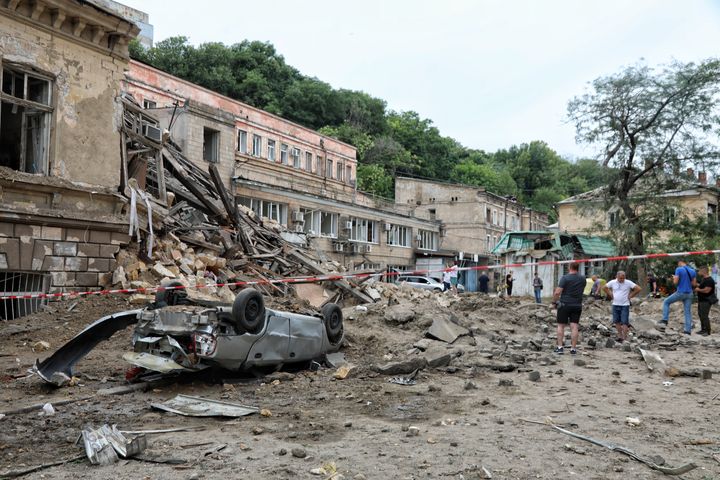
Russia launched a drone attack just 200 metres from the Romania border on Monday, according to UK intelligence.
Romania is part of Nato, the North Atlantic Treaty Organisation, a political and military alliance between 31 states including the UK, the US and France.
It hinges on the principle of “collective defence”, where an attack against one or more of its members is considered an attack against all – and lead to an escalation of conflict.
Ukraine is not a Nato state – although it is very keen to join the alliance – and, until this point, Russia has been careful not to strike too near to a Nato country since launching its invasion last year.
But, as the UK’s ministry of defence claimed in its daily update, “Russia extended one way attack drone strikes to the docks on the Danube River, approximately 200 metres from the Romanian border” on Monday.
While this attack on the town of Reni appears to have primarily been a bid to cripple Ukraine’s ability to export food, it was also the closest Russia has come to risking a direct confrontation with the US and Europe.
Moscow has spent the last week targeting Ukrainian ports near the city of Odesa, which is to the south of the country, but Reni is much further to the west, right on the border of Romania and around 70 miles from the coast.
Ukrainian officials and Romania’s president have already blamed the incident on Russia.
The MoD also noted that this seemed to be a change in tactic, as when the Black Sea Grain Initiative was still working, “Russia generally refrained from striking civil infrastructure in the southern ports”.
This agreement saw Russia lift its wartime blockade to allow Ukraine to export food – but Moscow let this deal expire earlier this month, claiming it was no longer serving Russia’s interests.
The UK intelligence officials added: “Since Russia failed to renew the deal, the Kremlin likely feels less politically constrained and is attempting to strike targets in Odesa because it believes Ukraine is storing military assets in these areas.”
It also pointed out: “Since the start of the war, Russia’s strike campaign has been characterised by poor intelligence and a dysfunctional targeting process.”
The New York Times said the origin of the drones could not be independently verified, and noted that Russia’s defence ministry has not referenced a new attack in the Odesa region in its latest update.
This isn’t the first time Nato has feared being drawn into the war.
There was international concern when Russia launched an attack on western Ukraine near the country’s border with Poland, another Nato member, last November.
Ukraine’s defensive attacks then “unfortunately fell on Polish territory”, the Polish president Andrezej Duda said at the time.
But, the incident was written off once Duda and Nato concluded that there was “nothing, absolutely nothing, to suggest that it was an intentional attack on Poland.”
